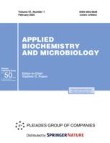
Abstract
Hemorrhagic fever with renal syndrome (HFRS) is an acute zoonotic disease caused by the orthohantaviruses Puumala, Dobrava-Belgrad (four genotypes), Hantaan (genotype Amur), and Seoul. In the Russian Federation, HFRS occupies the leading place among all natural focal human diseases. Formaldehyde, β-propiolactone, and ultraviolet radiation were tested to select the optimal method for viral inactivation during the development of a whole-virion vaccine against HFRS. The specific activity and the immunogenicity of the vaccine were determined, respectively, by the number of copies of viral RNA per 1 mL and by the neutralizing antibodies in the blood sera of BALB/c mice in response to immunization. Analysis of the immunogenicity of vaccines inactivated with formaldehyde, β-propiolactone, or UV radiation did not find significant differences in the level of induced neutralizing antibodies. At the same time, β-propiolactone has obvious technological advantages as c ompared to formaldehyde and UV radiation: the time of viral inactivation is reduced by dozens of times; neutralization of the inactivator and control of its content in the final vaccine are not required; and the amount of inappropriate protein in the vaccine is decreased due to the decrease in protein aggregation.



Δεν υπάρχουν σχόλια:
Δημοσίευση σχολίου
Σημείωση: Μόνο ένα μέλος αυτού του ιστολογίου μπορεί να αναρτήσει σχόλιο.